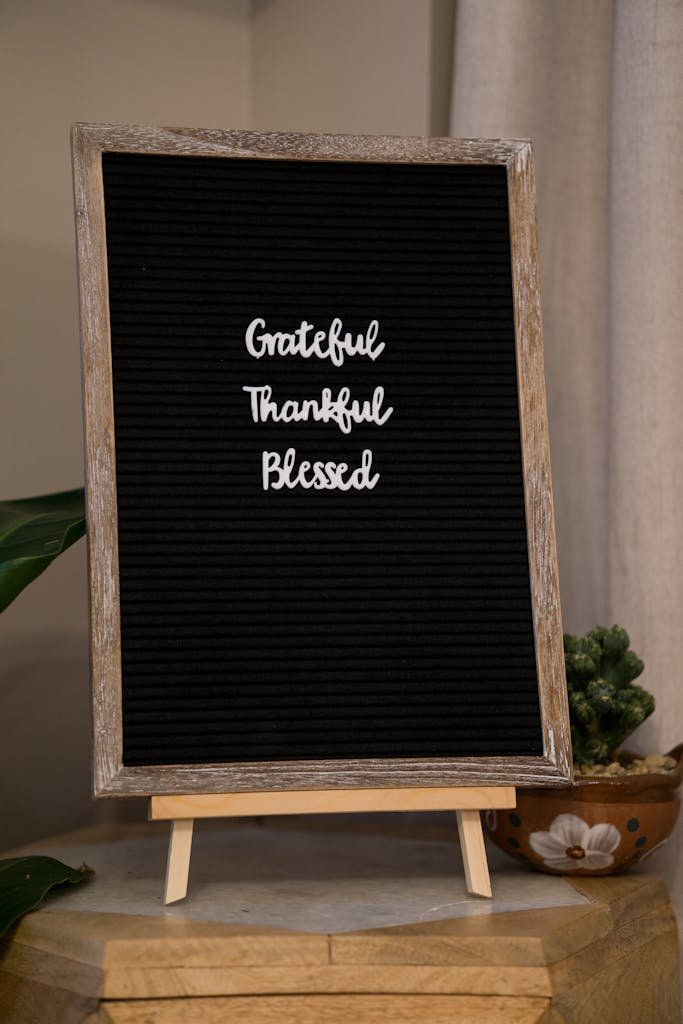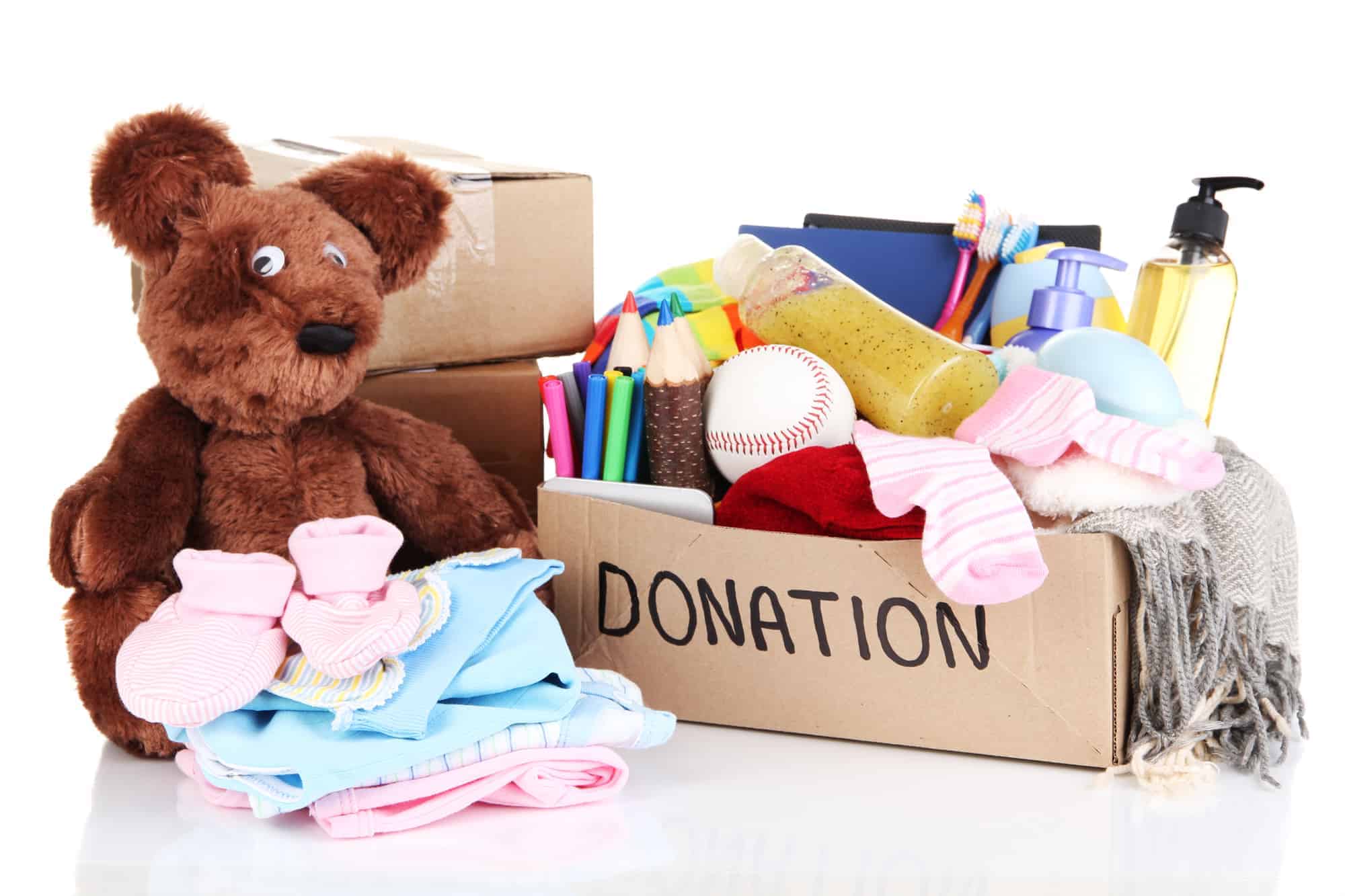13 Powerful Gratitude Activities for Kids (Raising Grateful Kids)
One of the most fundamental aspects of parenthood is raising grateful children, and gratitude activities for kids are great ways to teach them to be so. Gratitude and kindness are two crucial human traits which tends to lead to an adulthood of inner happiness and fulfillment.
Gratitude is the appreciation of what is valuable and meaningful to oneself; it is a general state of thankfulness and/or appreciation. (Source)
It isn’t a secret that in today’s society entitlement and ungratefulness appear to be and increasing trend. Sadly, our kids are not exempt from this ever-growing occurrence.
In fact, it has become harder than ever to teach our children about gratitude and simplicity, when we live an era of materialistic goods.
Although that isn’t the case everywhere, or for everyone, there seems to be a pattern of societal entitled and desensitization amongst our your.
iPhones, iPads, tablets, xBox, latest toys, latest trends, latest gadgets… I mean you name it, they want it.
We can blame a million factors for this, such as technology, social media, and the oversaturation of advertising in all platforms.
However, the truth is that if we cultivate gratitude in our children from early on, by modeling it and intentionally practicing it often… we can engrave it deep in their hearts and minds.
Why teach gratitude to our kids?
Being grateful isn’t just a wonderful human trait. It turns out that practicing gratitude also has and impact on our health and well-being.
Research shows that focusing on what we are grateful for is a universally rewarding way to feel happier and more fulfilled.
As Lisa Firestone, PhD, clinical psychologist, and Director of Research and Education, explains: the benefits of gratitude extend far beyond what we may imagine. Scientific studies have found that gratitude is associated with:
- Greater happiness
- Positive emotions
- Optimism
- Better health
- Fewer aches and pains
- More alertness
- More determination
- Increased generosity and empathy
- Better sleep
- Improved self-esteem
Why are gratitude activates for kids important?
Kids learn by doing. Kids learn by playing. Kids learn by repetition.
Gratitude activities for kids enables us to teach them how to be grateful for the world around them. While at the same time interacting and engaging in fun activities.
Next, we will go over 13 grateful activities for kids that you can use to help teach and reinforce this wonderful human trait!
Here are all of the Gratitude Activities for Kids we will be covering today:
- Modeling Gratitude
- Gratitude Prayer
- Gratitude Jar
- Gratitude Mural
- Family Gratitude Activity
- Volunteering
- Showing Gratitude to Those Around You
- Chore and Allowances
- “Count Your Blessing” Gratitude Activity
- Gratitude Journal
- Thought Reversal
- Gratitude Dinner Table
- Donating
Plus….
- Gratitude Books for Parents
- Gratitude Books for Kids
Remember that all of the following gratitude activities are only suggestions. Feel free to tweak them as you need to, to fit your kid’s age and family dynamic.
Alright, let’s get started….
13 Gratitude Activities for Kids

1. Modeling Gratitude
One of the simplest ways to teach gratitude to our kids is to lead by example.
Remember the famous phrase, “Do as I as say, not as I do?”
Yeah… that’s not going to get us far when teaching our children this kind of lesson.
You must put gratitude in action in your daily life and allow you kids to witness it firsthand. That way, when you are getting ready to talk to them about it, you are credible.
This is especially true if you have older kids. When faced with change, older children tend to put up resistance at first. One of their favorite go-to lines is, “well you don’t do it so why should I”?
Sound familiar?
In addition, by watching you practice gratitude, your children are more likely to adopt it themselves from a young age as a life principle, even if it isn’t something that is actively being taught.
For instance, a child whose parents eat broccoli for dinner, are more likely to eat broccoli themselves without being forced to.
So, you get the idea. Teach your children to be grateful by leading by example.
Gratitude activities for parents to lead by example:
- Acknowledge and give thanks to your partner or children out loud when they do something for you.
- Express your gratitude to your local community workers in your area (mailman, garbage truck crew, community police, and firefighters) by writing them a handwritten letter and handing them a small treat (hand-made cookies, cupcakes, etc.).
- Opt to be more positive when expressing yourself around your children. For instance, instead of saying, “it is so hot and unbearable today”, try saying instead, “what a beautiful sunny day.”
What might seem like small actions of gratitude, can turnout to have a big impact in their perspective when it comes to being grateful and appreciative towards others around them.
2. Gratitude Prayer
Often times, we get caught up in the noise of our day to day routine. So, finding time to be grateful for the things we have falls between the cracks of our busy days. The Bible has multiple scripture about gratitude and gratefulness that can help remind us of the little things.
God’s Word tells us to “give thanks in all circumstances,” and although that might often seem hard to do, it takes practice, discipline, and study of God’s word.
God’s word can encourage kids to develop an attitude of gratitude, and a great way of doing that is by replacing the ingratitude or complaint with God’s Word.
Great gratitude Scriptures for kids are:
- Oh give thanks to the Lord, for he is good, for his steadfast love endures forever! (Psalm 107:1)
- Rejoice always, pray without ceasing, give thanks in all circumstances; for this is the will of God in Christ Jesus for you. (1 Thessalonians 5:16-18)
- Do all things without grumbling or disputing. (Philippians 2:14)
Gratitude Prayer Activity Ideas
- Pray (or give thanks) for the food you eat when you sit together for every meal.
- Include a “thankful prayer” on your school morning routine.
- Have kids read and memorize gratitude scriptures.
3. Gratitude Jar
The Gratitude Jar is a fun and simple gratitude activities for kids and for the entire family to do together.
A Gratitude helps kids think about all the things they have and that they should be grateful for.
You can opt to store them away in a special Blessings Jar or any jar with a lid you have around the house.
There are different ways you can accomplish this Gratitude Jar activity. So read option below and choose one that will work best for you family.
Gratitude Jar Instructions
Option 1: Once a Week Gratitude Jar
- Every Monday, every family member gets 3 Post-it Notes (or any 3 small pieces of paper).
- Throughout the week everyone writes 3 things they are grateful for and puts them inside the jar with their name on it.
- Every Sunday, before or after dinner, everyone will take a turn pulling one paper at a time and reading the gratitude messages one by one.
Option 2: Once a Year Gratitude Jar
- Place the Blessing Jar in a place where is visible and accessible to everyone.
- Encourage everyone in the family to write gratitude messages throughput the year.
- Once a year—during Thanksgiving, Christmas Dinner, or New Year’s Eve— open the jar and read all of the gratitude messages out loud. That is a great way to end the year and it sets a great tone for the new one.
Here is a beautiful and decorative “Count Your Blessings Jar” you can get from Amazon.
Also, for younger kids, here is a great little book that will go great with this activity for younger children.
4. Gratitude Mural
This is a fantastic gratitude activity for kids!
The Gratitude Mural as a constant reminder of all the things we should be grateful for.
Gratitude Mural Activity Instructions
- Place a Pin Board in common are where is easily accessible to everyone (family room, kitchen, common hallway).
- Every month give each member of your family a post-it note or a custom paper cutout.
- Everyone gets to write 3 things they are thankful for.
- As the gratitude messages are completed, everyone pins them on the Gratitude Mural.
- Discuss everyone’s messages as a family at the end of each month and start a new round as each month commences.
Related Article: How to Create Family House Rules (50 Rules and Printable)
5. Family Gratitude Activity
This is one of my favorite gratitude activities for kids!
It is based in the idea that we as a family, are grateful for each other.
I believe that when we help our children cultivate gratitude in the household, towards one another as a family, it will in turn reflect in gratefulness towards external elements—school, friends, and others.
The concept of this gratitude activity for kids is similar to the Gratitude Mural. However, this time, the gratitude message will be directed to a specific member of the family.
The messages don’t have to be strictly about gratitude, but also about something kind, positive, and encouraging towards that person.
Family Gratitude Activity Instructions
- Place a small Pin Board in everyone room. Mom and Dad’s room should have 2 boards (one for each).
- Every month give each member of your family one Post-It note per family member.
- They are to write down one thankful, positive, or kinds thing about that person.
- Once done, they are responsible for distributing them to everyone’s Pin Boards.
- At the end of every month, everyone brings their Pin Boards to the dinner table and share what everyone had to say about them.
I am pretty sure you can find small Pin Board at Walmart or the Dollar Store. Otherwise, you can just order a pack like this in Amazon.
6. Volunteering
Another great way to teach children about gratitude is to help them realize what they should be grateful for.
Most children today grow up having everything they need from the time they are born.
That can indirectly create a sense of entitlement in our children, which if not careful can be carried into adulthood.
It is our job as parents to teach them about the world. The good and the bad. About the fortunate and not so fortunate, so that they are able to develop a sensitivity compass.
Doing volunteer work is a great way to help kids realize what the world is really like. By helping others who are less fortunate allows them to see firsthand how blessed and fortunate they are indeed.
Volunteering activities
Here are some volunteering and gratitude activities for kids that can help teach them about appreciation and compassion. Keep in mind the age of the child when picking a volunteering activity.
- Helping at a homeless shelter.
- Taking toys to a foster home.
- Make “essentials” care packages for the homeless.
- Hold a bake sale for a good cause.
- Help put together military packages.
- Make Christmas boxes for lower income kids.
7. Showing Gratitude to Those Around You
There are many people around us that are responsible for the many blessing we receive on a daily basis.

Showing our gratitude to those individuals is a great way to teach our kids about being appreciative.
After all, the garbage doesn’t through away itself. The mail doesn’t magically appear in our doorstep… and our community safety doesn’t happen without the sacrifice of those who are willingly protect us from harm on a daily basis.
Instructions:
Have your kids help you make a list of community workers that make a difference in your child’s life on a daily basis.
Here are some common Community Workers:
- Teachers
- Bus Drivers
- Police Officers (school resource officer)
- School Cafeteria Workers
- School Cross Guard
- Firefighters
- Mailman
- Garbage Disposal Workers
- Local Cashier
Then together, narrow down on community servers you wish to thank by presenting them with a gratitude gift to show your appreciation for their service.
Some simple gratitude gift ideas are:
- Hand written “Thank You cards”
- Kid’s Drawings
- Cupcakes
- Cookies
- Gift Cards
- Flowers
Once completed, go with your kids to deliver the gifts personally!
8. Chores and Allowance
How many times do you find yourself telling your children, “money doesn’t grow on trees”.
I believe that one of the most important factors about gratefulness and gratitude is to educate children early on about the value of money.
Where it comes from, how hard it is to earn it, and how we should manage it.

Setting an allowance gratefulness activity
You can put this to practice by setting up a Chores Rewards System such as “Work for Hire”.
They can use that money to buy something they really want after they have accumulated enough to afford it.
Managing their own funds, working hard to earn it, and spending it in one (or a few items) will give them a better appreciation for the things they already have.
They will appreciate how hard you work for what you provide for them, and how grateful they should be for it.
A great resource is the Acorns Debit Card for Kids. Acorns Early (formerly GoHenry) allows parents to teach their children about money value and management. With Acorns Early, allowance/chore money sent to their cards can be divided by Save, Invest, Give, and Spend accounts— which makes for a great teaching.
Check out the full details here!
9. “Count your blessings” gratitude activity
Another popular phrase we hear people say all the time is, “you should count your blessings.”
But honestly, if you were a child and your parents told you that, you would be asking yourself, “what does that even mean?”
The goal for this gratefulness activity is to make a list as a of the things you take for granted.
Even as adults we tend to forget how incredibly blessed we are about the smallest things. Just by taking a quick look at the world around us, many of those things would hit home.
A few reminders:
- Clean, accessible water at the touch of our fingers
- Electricity
- Freedom
- Transportation
- A roof over our head
- Shoes
- Food
- … and lot more.
With that said, those examples alone are not going to convince a child as to why they should be grateful. After all, most of them have yet to experience life’s hardships.
So, here’s what we can do instead.

“Counting your blessings” gratitude activity instructions
Consider and discuss with your kids the following scenario as an example:
Did you know: The plate of food in from of you didn’t just appear!
- Did you know that farmers worked day in and day out on crops to harvest the ingredients for this meal?
- Then, someone rinsed it and boxed it.
- Truck drivers drove them to the grocery store where someone stacked it neatly for us.
- Then mom/dad had to purchase all the ingredients with hard-earned money.
- And finally, someone had to cook it before it was placed in front of you.
Again, take into consideration the age of your children and feel free to alter the content to match their comprehension level. But you get the point.
They don’t know any better. It is our responsibility to create a sense of gratitude and accountability.
10. Gratitude Journal

Having and gratitude journal helps put a lot of things into perceptive.
A gratitude journal is not only a great way to put down on paper all of the positive things in your life, but it can also serve as motivation and encouragement for the “not so good days.”
It can also be a creative outlet for kids to express themselves in a positive way.
Gratitude Journal Activity for kids and Parents
- Buy a gratitude journal for each of your kids, and consider buying one for yourself.
- Explain to them that it is a gratitude journal and that you and them will be doing this activity together.
- Pick a day of the week when you sit down together to write positive experiences you had that week.
- You can give them the option to read their entry out loud or to keep it private.
- Explain that the gratitude journal will serve as a reminder of all of their blessings when some days don’t go as planned.
11. Thought Reversal
A simple gratitude activity to implement is thought reversal. Simply, instruct your child to reverse negative of unproductive thoughts to positive ones.
Helping them redirect complaint or ingratitude with good things that are all around us instead.
He are a few examples:
Child: “I don’t want this for dinner.”
Thought reversal: “I am grateful for the food in my plate, as I understand there are people around the world who don’t have the save privilege.”
Child: I don’t want to clean my room.”
Thought reversal: “I am grateful to have a clean and comfortable place to sleep and rest in.”
12. Dinner Table Gratitude Activity
Another easy and effective gratitude activity is to say one thing everyone is thankful for at the dinner table.
Every day, or once a week, have every member of the family say what they are grateful for before you start eating dinner.
Having children listen to everyone else around the table show gratitude and appreciation for something or someone helps them learn more about this concept.
13. Donation

Just like volunteering, donating time, things, and/or money is a great hands-on way to get children to understand the significance and impact of gratefulness and kindness.
Kids could be very possessive of their things, especially toys.
Teaching them to give, not just from other sources, but from their own stuff is a very significant lesson.
Donating gratefulness activity
Once or twice a year (close to Thanksgiving or during Spring cleaning season are great times) have your kids perform a toy inventory and voluntarily give away 3-5 toys to charity.
Obviously, this depends on the child, their age, and the number of toys they have.
This gratefulness activity works best if you can carry the entire experience through and take the toys in person to a facility that needs them (foster home, homeless shelter, churches, etc.).
Kids learn by watching and by doing. Trust me, they will never forget this day!
Gratitude Resources for Kids and Parents

Gratitude for Kids Books
One of the best ways to teach our kids about anything, is through books.
Here is a great compilation of gratitude books for kids that can help teach them about being grateful and appreciative of the world around them.
- Books of Kindness: ABCs of Kindness; 123s of Thankfulness; Happiness Is a Rainbow; Friendship is Forever
- Grateful Ninja: A Children’s Book About Cultivating an Attitude of Gratitude and Good Manners
- Being Thankful (Mercer Mayer’s Little Critter)
- Grow Grateful
Gratitude Books for Parents
Here are great reads that can guide you along with this important parenting principle.
Raising Grateful Kids in an Entitled World by Kristen Welch is a popular choice for teaching gratitude to kids. This parent’s guide talks about how one family learned that saying no can lead to life’s biggest “yes”.
The Me, Me, Me Epidemic by Amy McCready is a step-by-step guide to raising capable, grateful kids in an over-entitled world.
Making Grateful Kids: The Science of Building Character by Jeffrey Froh and Giacomo Bono. It is also for parents who are looking to learn how to raise grateful children.
NOTE: You can get two of these books FREE (in audible form) when you sign up for a 30-day free trial of Amazon Audible. I highly recommend these books in Audible form for busy moms that are always on the go. Listening to these wonderful books (and many more) while driving, doing the dishes, or going for a jog can be really rewarding.
Final Thoughts
My father once taught me that the world doesn’t owe us anything, instead, we owe the world.
He says that we are born to a world where others have already worked and sacrificed to receive us.
Therefore, we can’t be entitled to anything, because everything and everyone who welcomed our entrance to this word, were the sole contributors.
When we were born, soldiers were already fighting for our freedom. The crib we slept in was built by the hands of someone who probably worked on it for hours. And our parents ensured that every single second we were protected and loved.
In turn, as we grow, we help pay it forward to humanity, with the same gratitude and compassion to the next generations.
Therefore, it comes down to basics…
Children are not born knowing. So, it is or job to educate them and guide them.
Teach them from early on about gratitude, humility, kindness, love, and compassion.
With these magnificent traits, not only will they help make the world a better place, but they themselves are likely to live more content and fulfilled.
Have you tried any of these Gratitude Activity for Kids?




